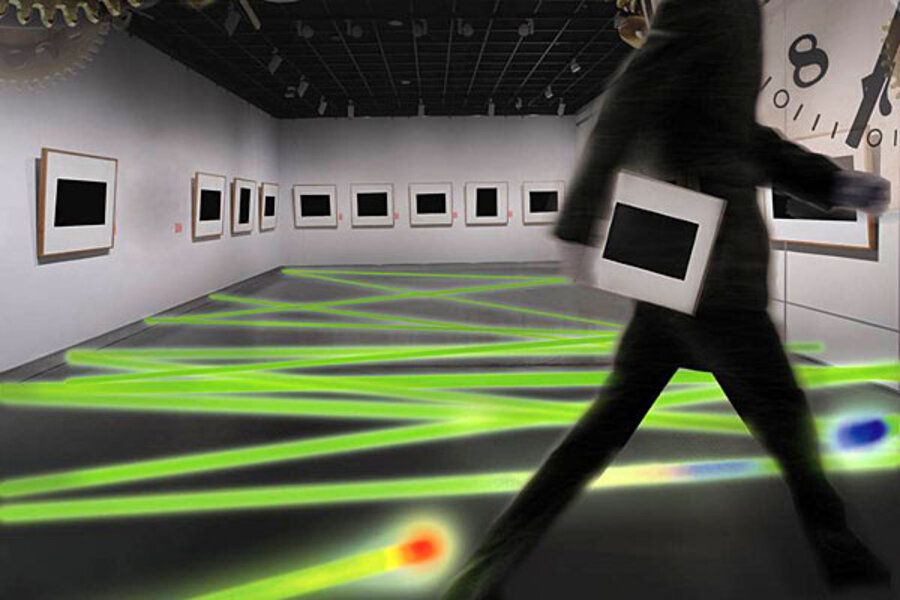Time cloaking: how scientists opened a hidden gap in time
Loading...
Forget wrapping an object – say, Harry Potter – in a cloak of invisibility. How about hiding an event using time?
What may be a distant dream for this year's Indianapolis Colts has been demonstrated for the first time by a team of physicists at Cornell University.
The approach is dubbed "temporal cloaking," and it builds on experiments researchers have already conducted to demonstrate that they can hide objects from view.
Indeed, scientists had already succeeded at "spatial cloaking," which involves bending light around an object in such a way as to make it appear invisible. Temporal cloaking involves interrupting light to create a seeming gap in time in which an event can be hidden.
At this point, the time gap that the scientists created is so brief – about 50 trillionths of a second – that practical implications are barely a gleam in anyone's eye. But the researchers are interested in trying to lengthen the amount of time a beam's gap remains open, says Alexander Gaeta, who led the team reporting the results in the Jan. 5 issue of the journal Nature.
In essence, the team briefly turned off a laser beam in a way that instruments receiving the beam could not detect. An observer would have no clue that the beam had blinked, and so would have no evidence of anything that happened to the beam in that 50 trillionths of a second.
University of Rochester physicists Robert Boyd and Zhimin Shi, who are not members of Dr. Gaeta's team, liken the phenomenon to traffic at a railroad crossing.
The crossing gate falls, interrupting traffic (the laser beam) as the commuter train passes. From the perspective of the train, for a brief period there is no traffic and it can freely pass (the hidden event). Yet once the gate rises, traffic resumes and speeds up. To an observer a mile or two away, the flow of traffic shows no evidence of interruption – no evidence from traffic flow that a train had ever been there.
How did the team open a gap in the laser beam?
The researchers took advantage of the fact that when light travels through a material, different colors travel at different speeds. To alter colors in a segment of the laser beam, the researchers used a laser-based device dubbed a time lens.
Typical glass lenses bend light, changing its distribution in three-dimensional space. Time lenses, on the other hand, "do really funny things" to light, altering its traits for a defined period of time, Gaeta says.
In this case, the team's modified time lenses briefly gave two adjoining segments of the green beam a red and a blue hue. When the segments passed through a specially designed length of optical fiber, the red light slowed and the blue light accelerated.
The difference opened a gap in the beam – no light – that lasted about 50 trillionths of a second.
Coming out the other side, the researchers reversed the process, slowing the blue and speeding the red, then passing them through another time lens to returning the beam to its original green color, leaving no hint of its temporary alteration.
Well, almost no hint.
To see if their technique could hide an event from view, scientists shot a different laser beam into the gap. Usually, when two laser beams interact, the effects are easy to spot. In this case, though, the effects were more than 10 times weaker than they would have been if there had been no temporal cloaking.
For now, much work will focus on gaining a clearer understanding of the physics involved and how to take advantage of them, says Dr. Shi of Rochester.
Still, he adds, the basic physics of spatial cloaking and temporal cloaking are mathematically similar.
With the addition of a cloaking approach that "plays tricks with time" to the other approach of playing tricks with light's distribution around an object in space, "hopefully we can find an easier way to create effective cloaking."





